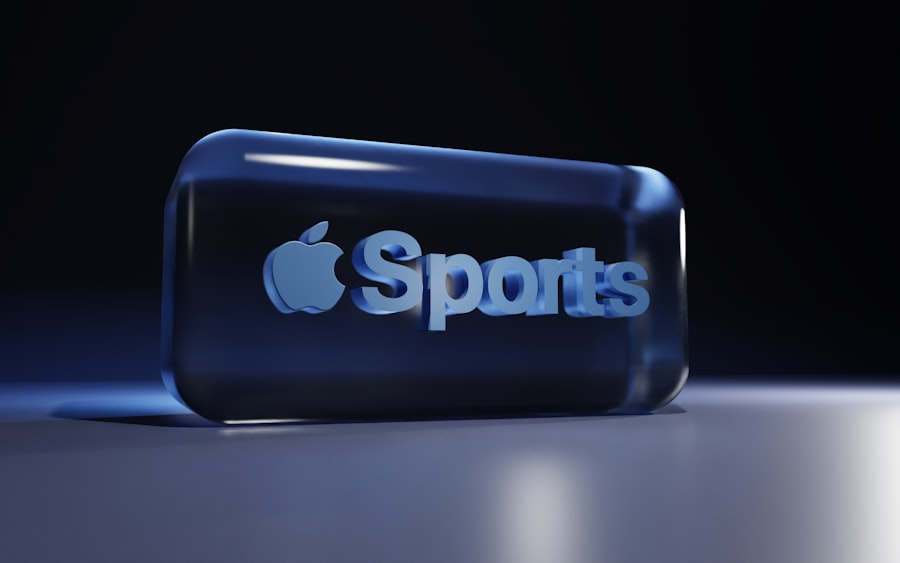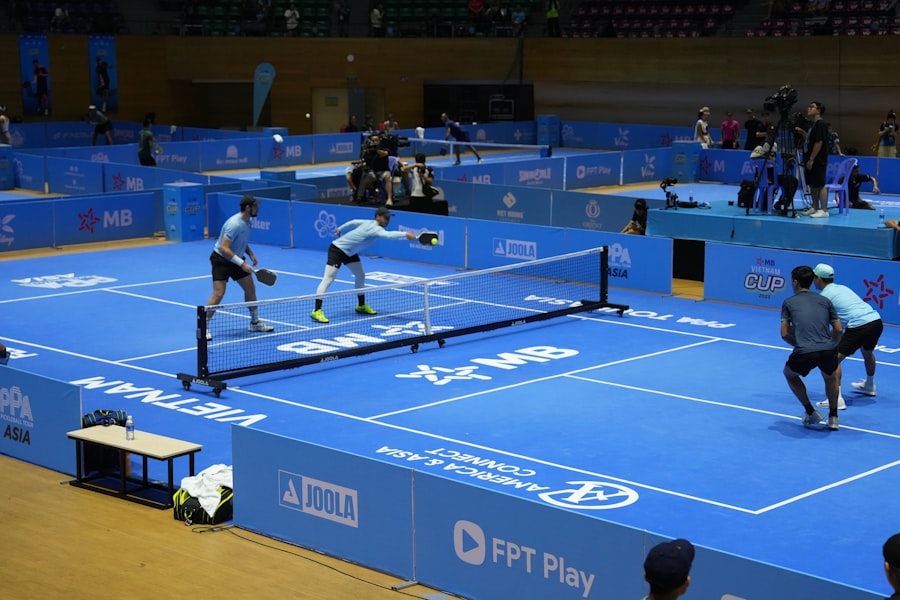In the contemporary sports landscape, an athlete’s brand transcends mere performance on the field or court; it encapsulates their personality, values, and the narrative they project to the world. An athlete’s brand is a multifaceted construct that includes their public persona, social media presence, and the emotional connection they forge with fans. This brand is not only a reflection of their athletic prowess but also of their character, lifestyle choices, and social impact.
For instance, athletes like LeBron James and Serena Williams have cultivated brands that resonate deeply with their audiences, often intertwining their sports achievements with advocacy for social justice and community engagement. Understanding an athlete’s brand involves recognizing the unique attributes that set them apart from their peers. This includes their style of play, personal story, and how they engage with societal issues.
For example, Colin Kaepernick’s brand is heavily tied to his activism and stance on racial inequality, which has garnered both support and criticism. This complexity makes it essential for athletes to be authentic in their branding efforts, as fans are increasingly drawn to genuine narratives that reflect real-life experiences. The athlete’s brand must be carefully crafted and consistently communicated across various platforms to ensure that it resonates with both existing fans and potential new followers.
Key Takeaways
- Athletes must develop a clear and authentic personal brand to stand out.
- Social media is essential for increasing visibility and connecting with fans.
- Strategic partnerships with brands and sponsors enhance credibility and income.
- Consistent, engaging content strengthens personal branding and fan loyalty.
- Regularly evaluate marketing efforts to optimize growth and reach new audiences.
Leveraging Social Media for Maximum Exposure
Social media has revolutionized the way athletes connect with their fans and promote their brands. Platforms like Instagram, Twitter, TikTok, and Facebook provide athletes with direct channels to share their lives beyond the game, allowing them to showcase their personalities, interests, and values. For instance, athletes can use Instagram Stories to provide behind-the-scenes glimpses into their training regimens or personal lives, creating a sense of intimacy and relatability that traditional media cannot replicate.
This direct engagement fosters a deeper connection with fans, who feel more invested in the athlete’s journey. Moreover, social media serves as a powerful tool for amplifying an athlete’s message and expanding their reach. By utilizing hashtags, collaborating with influencers, or participating in viral challenges, athletes can tap into broader conversations and trends that resonate with diverse audiences.
For example, NBA players often engage in playful banter on Twitter or participate in TikTok dance challenges, which not only entertains fans but also keeps them relevant in popular culture. The ability to create shareable content that aligns with current trends can significantly enhance an athlete’s visibility and attract new followers who may not have previously engaged with their brand.
Building Partnerships with Brands and Sponsors

Strategic partnerships with brands and sponsors are crucial for athletes looking to monetize their personal brands effectively. These collaborations can take various forms, from traditional endorsement deals to co-branded products or campaigns that align with the athlete’s values and interests. For instance, Nike has successfully partnered with numerous athletes like Michael Jordan and Cristiano Ronaldo to create signature lines that not only generate revenue but also enhance the athlete’s brand identity.
Such partnerships can elevate an athlete’s status in the market while providing brands with authentic ambassadors who embody their values. When pursuing partnerships, athletes must consider the alignment between their personal brand and the brands they choose to collaborate with. A mismatch can lead to backlash from fans or damage to the athlete’s reputation.
For example, if an athlete known for promoting health and wellness were to endorse a fast-food chain, it could create cognitive dissonance among their followers. Therefore, it is essential for athletes to conduct thorough research on potential partners and ensure that any collaboration reflects their personal ethos. This strategic approach not only strengthens the partnership but also enhances the overall perception of the athlete’s brand in the eyes of consumers.
Creating Engaging Content and Personal Branding
| Metric | Description | Typical Range | Importance |
|---|---|---|---|
| Content Engagement Rate | Percentage of audience interacting with content (likes, comments, shares) | 1% – 10% | High |
| Follower Growth Rate | Monthly increase in followers or subscribers | 5% – 20% | High |
| Content Consistency | Frequency of posting content (posts per week) | 3 – 7 posts/week | Medium |
| Brand Recall | Percentage of audience who remember the personal brand | 30% – 70% | High |
| Click-Through Rate (CTR) | Percentage of users clicking on links in content | 2% – 8% | Medium |
| Audience Demographic Match | Alignment of content with target audience demographics | 70% – 90% | High |
| Content Shareability | Number of times content is shared per post | 10 – 100 shares/post | Medium |
| Personal Brand Sentiment | Positive vs negative mentions ratio | 80% positive | High |
Content creation is at the heart of effective personal branding for athletes. Engaging content can take many forms, including videos, blogs, podcasts, or even live streams that showcase an athlete’s personality and interests outside of their sport. For example, NBA star Stephen Curry has leveraged his love for cooking by sharing recipes and cooking tips on social media platforms, thereby connecting with fans on a more personal level.
This type of content not only entertains but also humanizes the athlete, making them more relatable to a broader audience. In addition to showcasing personal interests, athletes should focus on storytelling as a powerful tool for branding. Sharing personal anecdotes about challenges faced during their careers or insights into their training routines can create a compelling narrative that resonates with fans.
For instance, gymnast Simone Biles has openly discussed her mental health struggles, which has sparked important conversations around mental wellness in sports. By being vulnerable and authentic in their storytelling, athletes can foster deeper connections with their audience while reinforcing their brand identity as relatable figures who navigate similar life experiences.
Utilizing Endorsement Deals and Sponsorships
Endorsement deals and sponsorships are vital components of an athlete’s financial success and brand growth. These agreements often provide athletes with substantial income while simultaneously enhancing their visibility in the marketplace. High-profile endorsements can elevate an athlete’s status and credibility within their sport and beyond.
For example, endorsements from global brands like Adidas or Gatorade can significantly boost an athlete’s profile while providing them with resources to further develop their brand. However, successful endorsement deals require careful negotiation and alignment between the athlete’s brand and the sponsoring company’s image. Athletes must ensure that any partnership reflects their values and resonates with their fan base.
A well-executed endorsement can lead to increased sales for the brand while simultaneously enhancing the athlete’s reputation as a trusted figure in the industry. For instance, when tennis champion Roger Federer partnered with Uniqlo after years with Nike, it was a strategic move that aligned his sophisticated image with Uniqlo’s minimalist aesthetic, resulting in mutual benefits for both parties.
Engaging with Fans and Building a Strong Community

Engagement with fans is a cornerstone of building a successful athlete brand. Athletes who actively interact with their followers create a sense of community that fosters loyalty and support. This engagement can take many forms, from responding to comments on social media posts to hosting Q&A sessions or live chats where fans can ask questions directly.
For example, NFL quarterback Russell Wilson frequently engages with his followers by sharing motivational messages and responding to fan inquiries on Twitter and Instagram. Creating opportunities for fans to connect personally with athletes can also enhance community building. Initiatives such as meet-and-greet events, charity functions, or fan appreciation days allow athletes to express gratitude towards their supporters while strengthening relationships within their fan base.
Additionally, leveraging platforms like Twitch or YouTube for live streaming gaming sessions or training routines can create interactive experiences that draw fans closer to the athlete’s world. This level of engagement not only solidifies fan loyalty but also encourages word-of-mouth promotion as fans share their positive experiences within their networks.
Expanding into New Markets and Target Audiences
As athletes seek to grow their brands, exploring new markets and target audiences becomes essential for sustained success. This expansion can involve reaching out to international markets where sports may be gaining popularity or tapping into niche demographics that align with the athlete’s interests or values. For instance, soccer players like Neymar Jr.
have successfully expanded their brands into markets such as Asia and North America by participating in exhibition matches or promotional events that cater to local audiences. Athletes can also diversify their appeal by aligning themselves with causes or movements that resonate with specific demographics. For example, NBA player Chris Paul has been vocal about issues affecting the African American community and has partnered with organizations focused on social justice initiatives.
By doing so, he not only strengthens his connection with fans who share similar values but also attracts new followers who appreciate his advocacy work. This strategic approach allows athletes to broaden their influence while remaining authentic to their core identity.
Measuring Success and Adjusting Strategies for Growth
To ensure continued growth and relevance in an ever-evolving sports landscape, athletes must regularly measure the success of their branding efforts and adjust strategies accordingly. Key performance indicators (KPIs) such as social media engagement rates, follower growth, merchandise sales, and sponsorship revenue provide valuable insights into what resonates with audiences. By analyzing these metrics, athletes can identify which aspects of their branding are effective and which may require reevaluation.
Additionally, soliciting feedback from fans through surveys or direct interactions can provide qualitative insights into audience perceptions of the athlete’s brand. This feedback loop allows athletes to remain attuned to changing trends and preferences within their fan base. For instance, if an athlete notices a decline in engagement on certain types of content or campaigns that previously performed well, they may need to pivot their approach or explore new creative avenues to maintain interest.
By being adaptable and responsive to audience feedback, athletes can ensure that their brands remain dynamic and relevant in a competitive environment.



